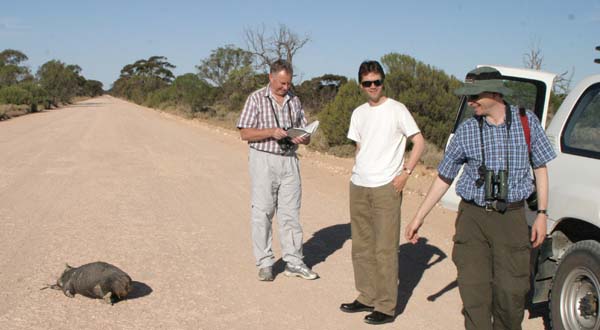 MAMMALS
MAMMALS
This fast-paced five-day trip was focused on birds, but we did find some larger mammals and a couple of reptiles. Unfortunately, a late afternoon effort on first arrival 17 Nov, hoping for Southern Hairy-nosed Wombat Lasiorhinus latifrons, found only one killed on the road (right; that's Bruce, Peter, and Murray, L to R).
We had better luck with a huge mother Red Kangaroo Macropus rufus and her joey (below).
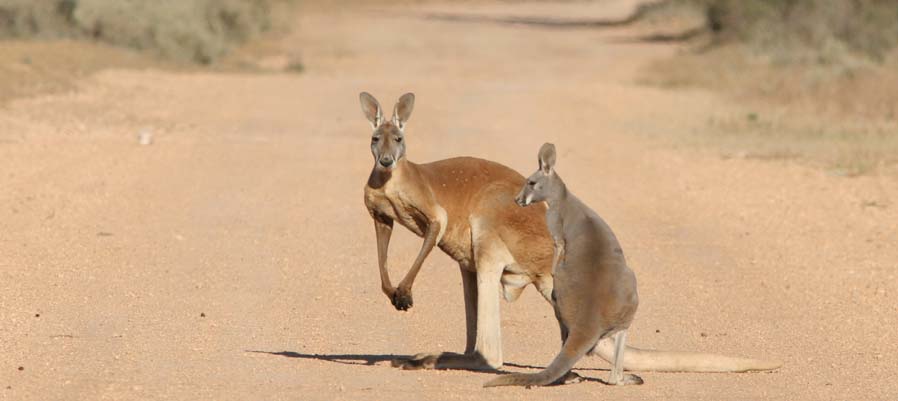
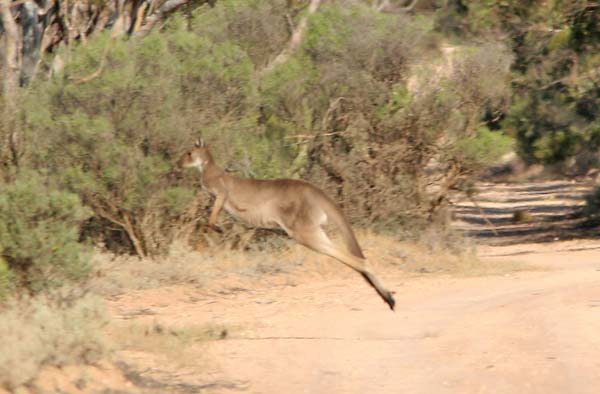
Red Kangaroos were reasonably common in arid country, but even more so were Western Gray Kangaroo Macropus fuliginosus (right) whose abundance made driving at night dangerous, and we avoided night drives when we could. We still almost hit a Western Gray that dashed out during the daytime right in front of us.
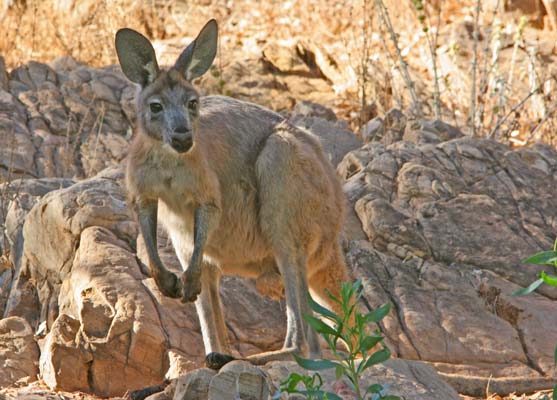
Exciting for me was lifer Euro (Common Wallaroo) Macropus rubustus in the Flinders Range (left & below). They are more robust and muscular than Western Gray; this is one kangaroo that would beat you up in a boxing match.
The photo below, from the Short-tailed Grasswren spot on Stokes Hill, is a collage of 3 shots in quick succession of a single bounding Euro that I've pasted together into one photo.
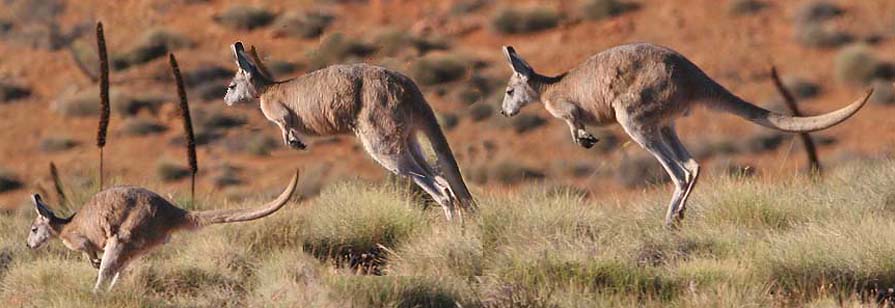
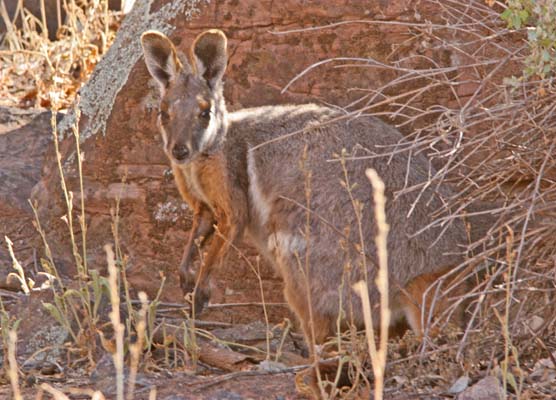
Another highlight in the Flinders Range was Yellow-footed Rock Wallaby Petrogale xanthopus (right), a threatened species limited to a few sites with rocky scree. It is a beautiful mammal, and closely related to Black-footed Rock Wallaby P. lateralis that Rita and I enjoyed around Alice Springs in August 2008.
 We encountered three different Shingleback Tiliqua rugosa (left & below); this one (left) is likely T. r. aspera.
Although wonderfully docile critters, some give an impressive
blue-tongued gape-mouthed threat display if approached too closely
(below).
We encountered three different Shingleback Tiliqua rugosa (left & below); this one (left) is likely T. r. aspera.
Although wonderfully docile critters, some give an impressive
blue-tongued gape-mouthed threat display if approached too closely
(below).  |
 |
 |
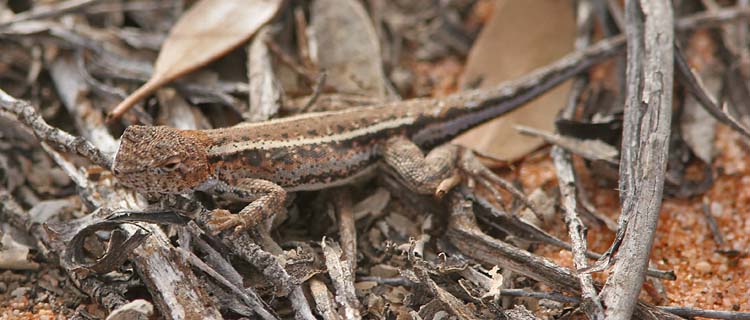 The
only other reptile that I managed to see (and photograph) was this
small lizard in the mallee at Gluepot Reserve. It goes by the fairly
ridiculous name of Mallee Military Dragon Ctenophorus fordi. The name seems silly since this little lizard is only 58mm long (snout to vent), about 2.5 inches, like a fence lizard Sceloporus
in the United States. "Military Dragon" seems much too impressive for
this cute little guy. [Names from Wilson & Swan (2008).]
The
only other reptile that I managed to see (and photograph) was this
small lizard in the mallee at Gluepot Reserve. It goes by the fairly
ridiculous name of Mallee Military Dragon Ctenophorus fordi. The name seems silly since this little lizard is only 58mm long (snout to vent), about 2.5 inches, like a fence lizard Sceloporus
in the United States. "Military Dragon" seems much too impressive for
this cute little guy. [Names from Wilson & Swan (2008).]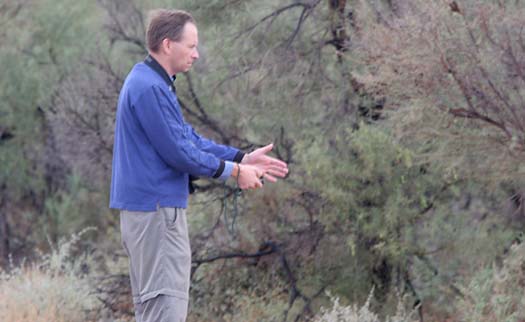
In addition, Murray Lord taped the calls (left) of some frogs heard in flooded road edge south of Leigh Creek, but we don't yet have an i.d. on them.
Guides used:
- Menkhorst, P., and F. Knight. A Field Guide to the Mammals of Australia. 2d ed. Oxford Univ. Press, South Melbourne.
- Wilson, S., and G. Swan. 2008. A Complete Guide to Reptiles of Australia. 2d ed. New Holland Publ., Sydney.
BONUS HERPS: In Murray Lord's backyard, at night in Castlecrag, suburb of Sydney, N.S.W., just before the South Australia trip
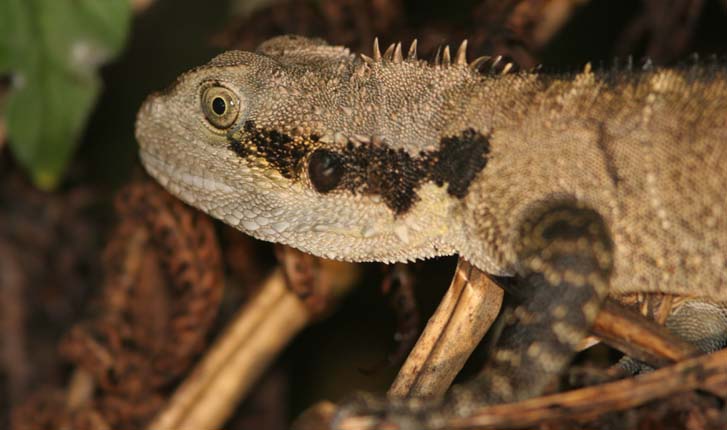 A little creek at the bottom of Murray's yard attracts a surprising variety of wildlife for suburban Sydney. This Eastern Water Dragon Physignathus l. lesuerii (right) was sleeping (although it looks 'awake' in the photo).
A little creek at the bottom of Murray's yard attracts a surprising variety of wildlife for suburban Sydney. This Eastern Water Dragon Physignathus l. lesuerii (right) was sleeping (although it looks 'awake' in the photo).
Murray pointed out the calls of four different frogs, two of which I managed to photograph (below).
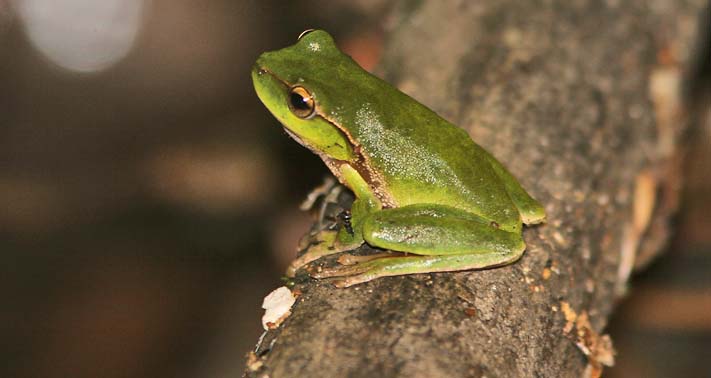
The first frog was steadily calling from a little branch that overhung the creek. Not much bigger than the tip of your thumb, it is known as Leaf Green Tree Frog (aka Green Stream Frog) Litoria phyllochroa.
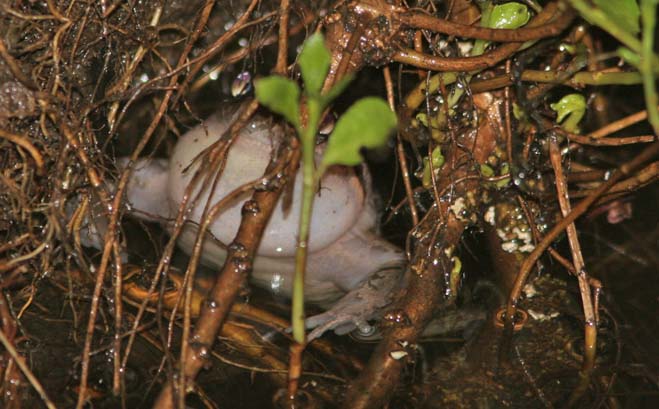 The
second frog was calling from the margin of the creek, tucked back into
a little divot; it sank immediately after the flash went off. The photo
(right) shows the expanded voice sac with the eye just above. The
species is Striped Marsh Frog Limnodynastes peronii.
The
second frog was calling from the margin of the creek, tucked back into
a little divot; it sank immediately after the flash went off. The photo
(right) shows the expanded voice sac with the eye just above. The
species is Striped Marsh Frog Limnodynastes peronii.
Heard but not seen were Common Eastern Froglet Crinia signifera (a "rek rek rek" call that we were quite close to), and Peron's Tree Frog Litoria peronii (a more distant one, probably calling from a garden along the street).
South Australia MALLEE, FLINDERS & COASTAL HIGHLIGHTS |
|
South Australia BIRDSVILLE TRACK HIGHLIGHTS |
|
page created 5 Dec 2009
|
© Don Roberson 2009 |